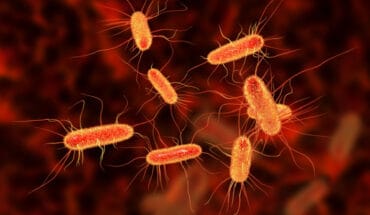Stem cell plasters to stop children needing repeated heart surgeries: Researchers at the University of Bristol, funded by the British Heart Foundation (BHF), have developed ‘stem cell plasters’ to revolutionise the way surgeons treat children living with congenital heart disease, so they don’t need as many open-heart operations.
Heart defects are the most common type of anomaly that develop before a baby is born, with around 13 babies diagnosed with a congenital heart condition every day in the UK. These include defects to the baby’s heart valves, the major blood vessels in and around the heart, and the development of holes in the heart.
Currently, for many of these children, surgeons can perform open-heart surgery to temporarily repair the problem, but the materials used for the patches or replacement heart valves are not completely biological and cannot grow with the baby. This means they can be rejected by the patient’s immune system which causes the surgical materials to gradually break down and fail in a few months or years.
A child might therefore have to go through the same heart operation multiple times throughout its childhood, which keeps them in hospital for weeks at a time, hugely impacts their quality of life and causes a lot of stress for the family.
Now, BHF Professor Massimo Caputo has developed the first type of stem cell patch to repair abnormalities to the valve in the large blood vessel that controls blood flow from the heart to the lungs, and to mend holes between the two main pumping chambers of the heart.
The stem cell plasters are designed to be sewn into the area of the child’s heart that needs repairing during surgery. The stem cells could then boost the repair of heart tissue without being rejected by the child’s body.
These patches have the potential to adapt and grow with the child’s heart as they get older, removing the need for repetitive heart surgeries and the many days at hospital recovering after each one.
There are around 200 repeat operations for people living with congenital heart disease every year in the UK. The technology could save the NHS an estimated £30,000 for every operation no longer needed, saving millions of pounds each year.
The BHF has awarded Professor Caputo nearly £750,000 with the aim to get these patches ready for testing in patients so clinical trials can start in the next two years, enabling more children and babies to benefit from the life-altering technology. The materials have already proven to work safely in animals.
The team is also in the early stages of developing other stem cell technologies using 3D bioprinting and gene therapy to one day be able to mend more complex congenital heart defects.
Massimo Caputo, BHF Professor of Congenital Heart Surgery at the Bristol Heart Institute, University of Bristol, said: “For years families have come to us asking why their child needs to have heart surgery time and time again. Although each operation can be lifesaving, the experience can put an unbelievable amount of stress on the child and their parents. We believe that our stem cell patches will be the answer to solve these problems.
“Our ultimate vision in the next decade is to create a paradigm shift in the way doctors treat congenital heart disease, by developing personalised stem cell and genetically-engineered treatments for the most complex of heart defects.”
Dr Sonya Babu-Narayan, Associate Medical Director at the British Heart Foundation, added: “If successful, this new stem cell therapy that acts like a healing plaster could revolutionise the results of heart surgery for children and adults living with congenital heart disease.
“It could offer a solution that means their heart is mended once and forever in a single operation, preventing people from facing a future of repeated surgeries and giving them the gift of a happier and healthier life.”
The work was partly funded by the National Institute of Health and Care (NIHR) Bristol Biomedical Research Centre (NIHR Bristol BRC), a partnership between University Hospitals Bristol and Weston NHS Foundation Trust (UBHW) and the University of Bristol.
Patient story #1
Finley, age 2 from Corsham in Wiltshire, was the first baby in the world with a congenital heart defect to receive a particular type of stem cell injection treatment to try and keep his heart pumping. It’s these donor stem cells that BHF Professor Massimo Caputo is now using to develop his stem cell plasters.
Finley was born with a congenital heart defect called transposition of the great arteries, where the two main arteries supplying blood to the lungs and the body are in the wrong positions. At just four days old he had his first open-heart surgery to switch the major arteries back to their normal position.
Finley’s mum, Melissa Hudd, explained: “Everything happened so quickly after giving birth. It was such a shock to find out that Finley had a heart condition and that he needed open-heart surgery. When he was born, I was only able to hold his hand for seconds through the incubator before he was whisked away to the ambulance.
“We were told to prepare from the start that the odds of him surviving without urgent surgery were not good and that the operation would be around four to six hours. After a long 12 hours, Finley finally came out of surgery but he was reliant on a machine that took over the function of his heart and lungs.”
There were complications from the first open-heart surgery and Finley’s heart function deteriorated significantly. The doctors tried a number of treatments but Finley was still stuck in intensive care for many weeks reliant on drugs and a ventilator to keep his heart going. So under compassionate grounds as a world-first, Professor Caputo used donor stem cells to inject directly into Finley’s heart during a second surgical procedure, in the hope they would help damaged blood vessels grow to increase the blood supply to the left side of his heart.
Melissa continued: “We nearly lost Finley when he was just two months old. Doctors called us into a room and told us they’d done everything they could. That’s when Massimo came to find us and explained there was one option left – to inject stem cells into the left side of Finley’s heart. He warned us that he couldn’t predict what the outcome would be. But we had absolutely nothing to lose. We had to try and give Finley every possible chance to live.
“Within two weeks of the stem cell treatment we noticed a change in Finley. He came home for the first time when he was just six months old on a machine that still helps him breathe at night.
“We can’t thank Massimo enough. I believe, if it wasn’t for the stem cell treatment, then Finley wouldn’t be here with us today. Finley is very feisty and very funny – he’s a real heart warrior and I tell him that all the time.
“We don’t know what the future brings, but we are so grateful for Finley’s life to be turned around after the stem cell treatment as he now has a chance at life he might not have had otherwise. The stem cell plasters Massimo is now developing sound incredible. If they could give the gift of life and save other families from the emotional turmoil of their children having repeated open-heart surgeries, then that would be life-changing.”
Patient story #2
Louie, age 13 from Cardiff, was born with a number of congenital heart defects. He’s already had two open-heart surgeries to correct them, which were performed by Professor Massimo Caputo. But Louie knows he’ll need the same surgery for a third time in the near future.
Louie’s mum, Lottie Stokes, explained: “We thought everything was fine, but the day after I gave birth to Louie we were told his heart was plugged-in the wrong way around, a major blood vessel in his heart was too narrow and he had a hole in his heart, which all needed fixing. It was fast talk about what the doctors were going to do to keep him alive right now, what they’ll do in the future and how many surgeries he’ll need.”
Louie had his first open-heart surgery two weeks before his first birthday where surgeons used a synthetic patch to close the hole and a prosthetic valve to allow blood to flow around and out of the heart correctly. Louie then had the same surgery repeated when he was four years old to replace the materials fixing his heart, with multiple procedures in between.
Lottie continued: “The worst part is saying goodbye to Louie at each operation. It’s very much a case of handing over your beautiful, tiny baby to surgeons just hoping they’ll look after them.
“Now Louie is older he doesn’t let his heart condition stop him. He lives and breathes football and enjoys playing it with his friends, but he does find it exhausting at times. With his t-shirt on you wouldn’t suspect anything, but when you see his operation scars, you just think wow, this boy has been through a lot.
“We’ve always talked to Louie about his ‘special heart’. He needs check-ups every six months and we know he’ll need a third open-heart surgery at some point but we don’t know when – it’s a waiting game. It’s not a fun game to play at all.
“Our heart is with Massimo, he truly is our hero. If Massimo’s stem cell research can take away the need for other babies to go through these multiple surgeries, it would mean the world to families so they don’t have to go through this heartache over and over like we have.”
BHF-funded research has turned ideas that once seemed like ‘science fiction’ into treatments and cures that save lives every day. But despite all our progress, millions of people are still waiting for the scientific breakthroughs of tomorrow, so that they can spend more time with the people they love. It is only thanks to the generous donations of the public that we can provide hope for children like Finley and Louie and find the cures and treatments of tomorrow.
To donate to the British Heart Foundation this festive season and give the gift that keeps on living, visit bhf.org.uk/Christmas
- New lipid-based pathway discovered as key to memory formation - 25th June 2025
- Crucial link could explain how Alzheimer’s takes hold - 25th June 2025
- Understanding Your Mind Can Improve Daily Life - 25th June 2025







